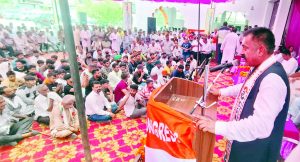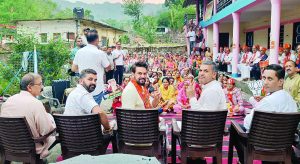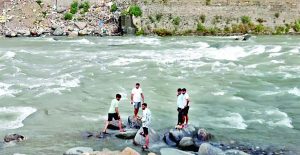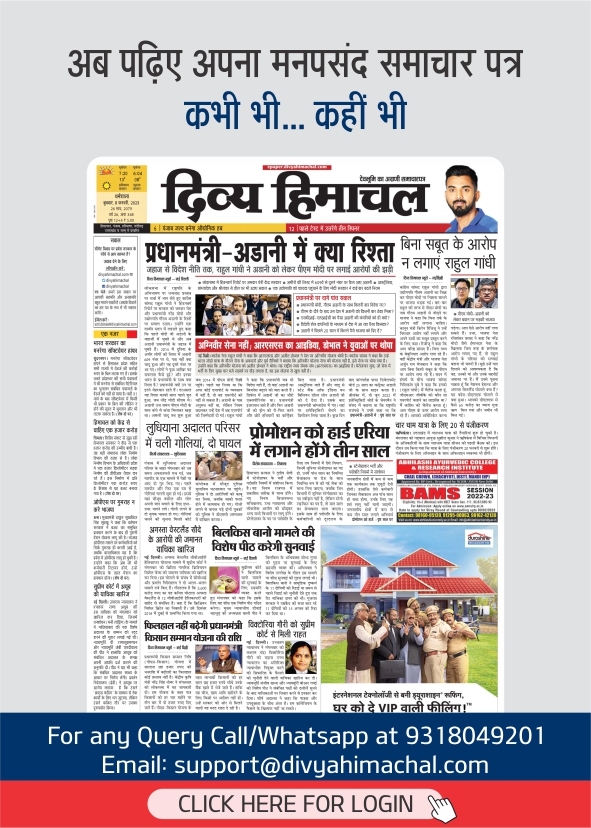Roads Key To Himachal’s Development
Y.S. Rana
The writer is a Hamirpur based Himachali settled in Chandigarh

The state tourism now is singing a different hospitality tune. There has been a surge in the number of tourists coming to the state. Notably, during the first four Five-year Plans up to 43% was spent on building roads and in fifth, sixth and seventh Five-year Plans, power sector became the priority and state achieved 100% rural electrification and heading towards 100% road connectivity. The neighbouring states have yet to achieve the targets.
Road connectivity to tribal areas is one of the major steps taken by the state government for its economic development. Due to poor accessibility, these areas remained unknown to outside world and isolated from rest of the state. Kinnaur was opened with construction of national highway in 1960 and with addition of link roads. Lahaul was made accessible with construction of Rohtang Pass.
60% Villages Connected
From having just 288 kilometres of roads in 1948, the state today has a road network of 25,399 kilometres metaled roads with road density of over 61% per square km of area. There are nine national highways with total length of 1250 kilometres over 60 major district roads with total length of 1754 kilometres. Over 60% of the villages have been provided road connectivity. The state has 17,449 villages and so far 10,350 villages have been connected with metalled roads.
More Connectivity In Lahaul & Spiti
As per official records, Bilaspur tops the list of road connectivity of villages. Over 72% of its villages have been connected with roads while Kinnaur district has the lowest road connectivity of villages at 26.61%. Lahaul and Spiti district has more village road connectivity (44.72%) compared to Shimla—state capital—which has road connectivity of 44.6%. With road connectivity enabled, it allowed the state government to invest 45% of the eighth and ninth plan budgets on schools, health and rural water supply.
Target For 2017-18
While speaking to Himachal This Week R.K. Verma, Chief Engineer, who looks after World Bank road projects in the state, said that nine projects out of 10 initiated by the World Bank assistance have been completed. He said the World Bank had sanctioned a loan of Rs 281 million in 2007 for expansion of road network in the state. Of this amount, 90% has been spent. He further revealed that over 4,000 kms road would be converted to double-lane. The department has a target to construct 1800 kms road in 2017-18. He admitted that road network made the state to outperform in literacy, per capita income, healthcare, industrial, agriculture growth and left its neighbouring States behind.
Himachal-o-Meter
The state’s ups and downs this week
Himachal Least Corrupt State in India
Shimla: Himachal Pradesh has been rated as the least corrupt state in the country with only 3% households experiencing corruption in public services, said a report by CMS-India Corruption Study 2017. In Himachal Pradesh, 53% respondents during 2005 study had said to have experienced corruption which has now come down to 3%. When general perception of households about corruption in public service during 2016 was checked in Himachal Pradesh, 16% respondents said that corruption has increased, 58% said it had decreased. Karnataka leads the pack with most corrupt activities (77%) followed by Andhra Pradesh (74%), Tamil Nadu (68%), Maharashtra (57%), J&K (44%) and Punjab (42%). The survey covered 20 states and recorded the three lesser corrupt states based on households ‘experiencing corruption in public services’ as Himachal Pradesh (3%), followed by Kerala (4%) and Chattisgarh (13%).
HRTC RM Nabbed With Synthetic Drugs
Shimla: A Regional Manager of the Himachal Road Transport Corporation (HRTC) and two others were arrested in Shimla with 4.4 kg of synthetic drugs (chitta) worth Rs 2.5 crore in the international market. The Shimla Police stopped Mohinder Rana’s official vehicle at Shoghi check post andfound the drugs during search, a police official said. State Transport Minister G S Bali said that Rana has tarnished the image of the corporation and has been suspended with immediate effect. Rana has been suspended in the past also but then the BJP- ruled state government had reinstated him in 2008. The police also arrested two persons, Vikas and Rajiv, who were travelling along with Rana. Bali said that it is a very serious matter and a thorough probe will be ordered into the matter.
विवाह प्रस्ताव की तलाश कर रहे हैं? निःशुल्क रजिस्टर करें !
Keep watching our YouTube Channel ‘Divya Himachal TV’. Also, Download our Android App














